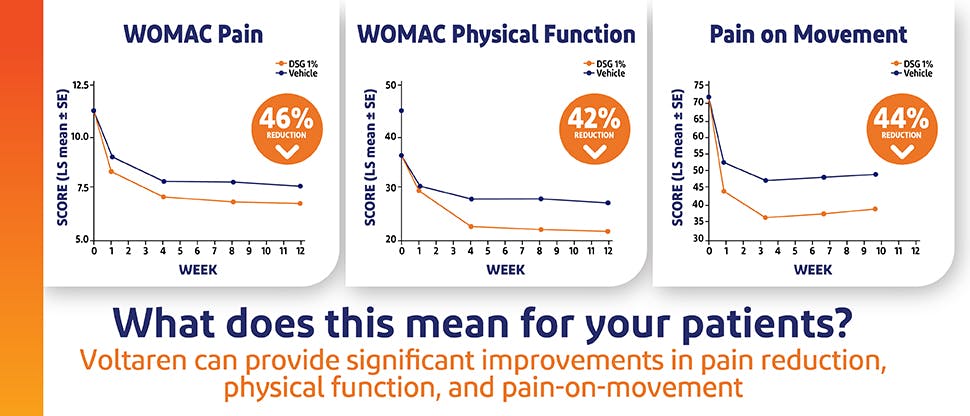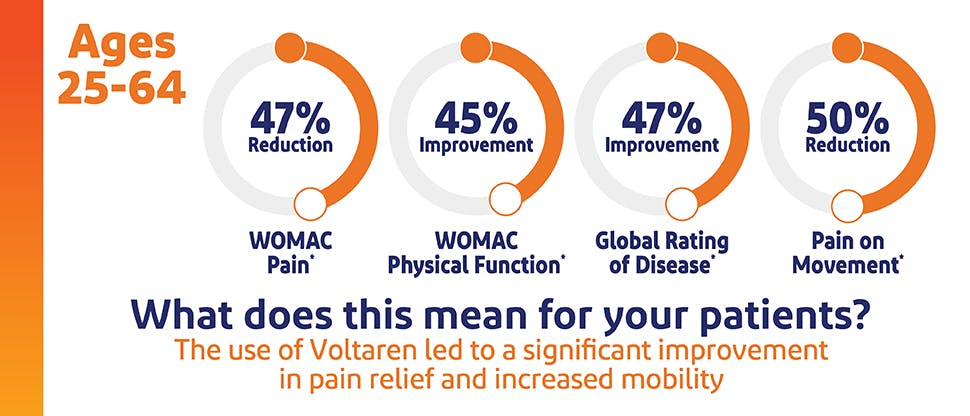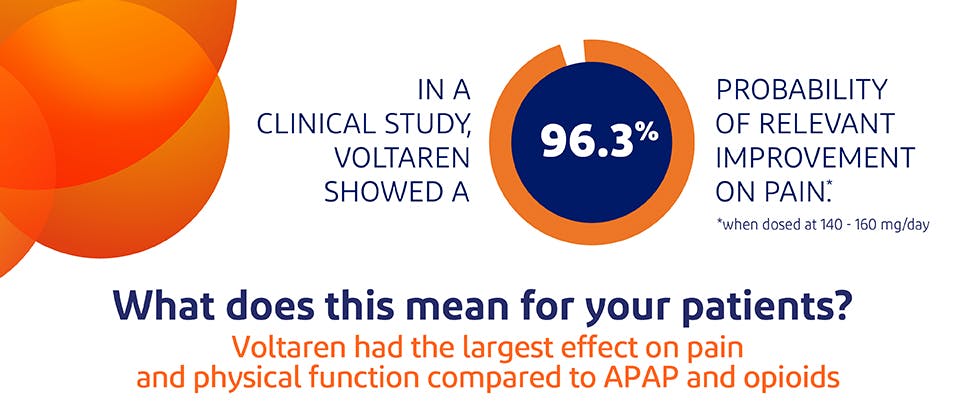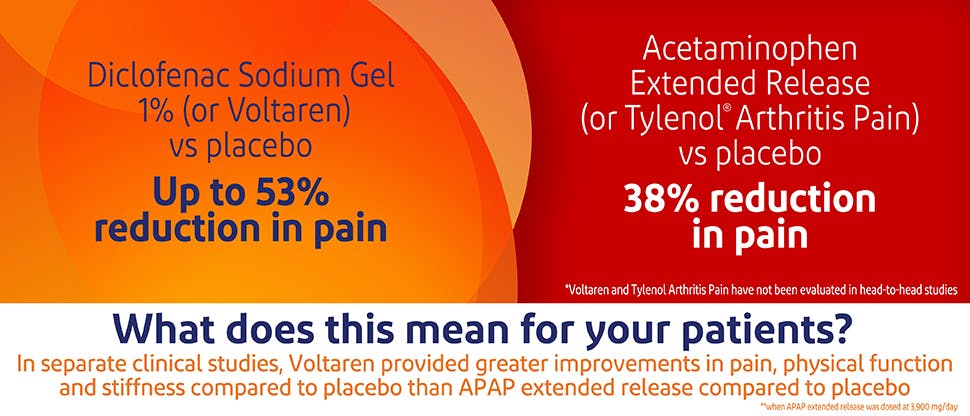Clinical Study Data: Knee Efficacy
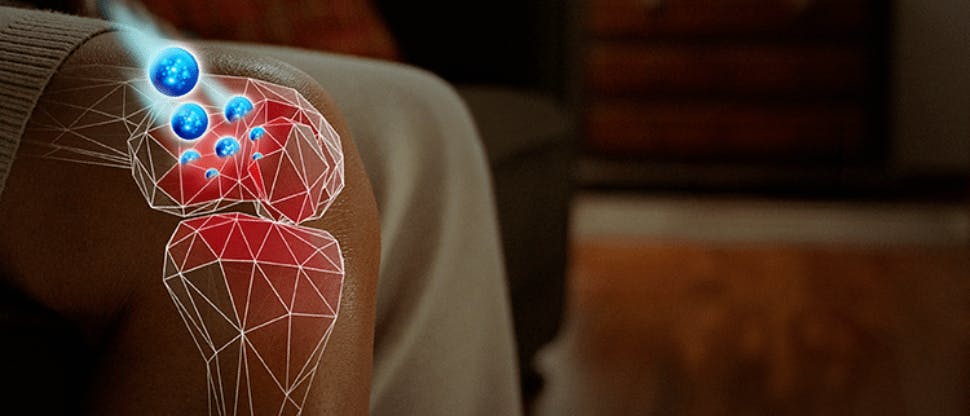
Voltaren effectively treats knee OA
Clinically proven to reduce pain and improve physical function
The Knee is the Joint Most Commonly Affected by OA
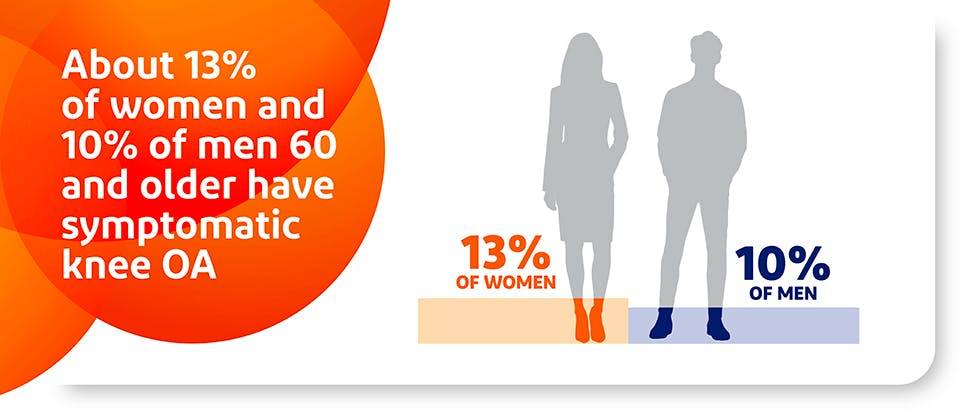
According to the Arthritis Foundation, about 13% of women and 10% of men 60 and older have symptomatic knee OA.1 With aging populations, increased rates of obesity, and injuries, there will continue to be more patients affected by OA. This can lead to serious effects on their mobility and quality of life.
Clinically proven to relieve arthritis pain
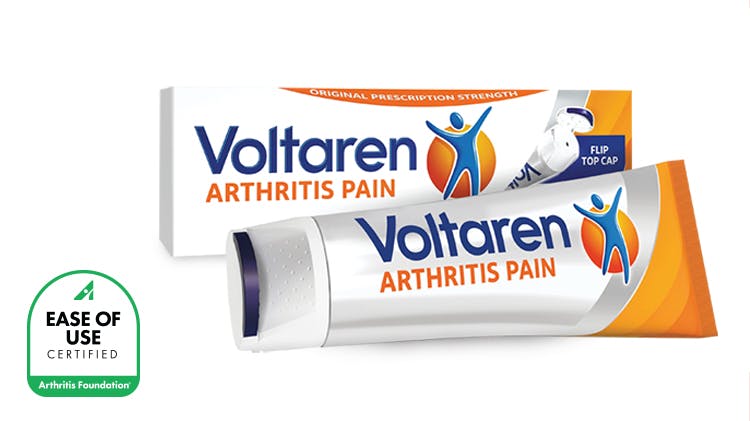
Voltaren Arthritis Pain Gel
Nonsteroidal anti-inflammatory topical gel with a proven safety profile for relieving arthritis pain.
Explore related content

Patient Resources
Access helpful educational content for your patients seeking pain relief.
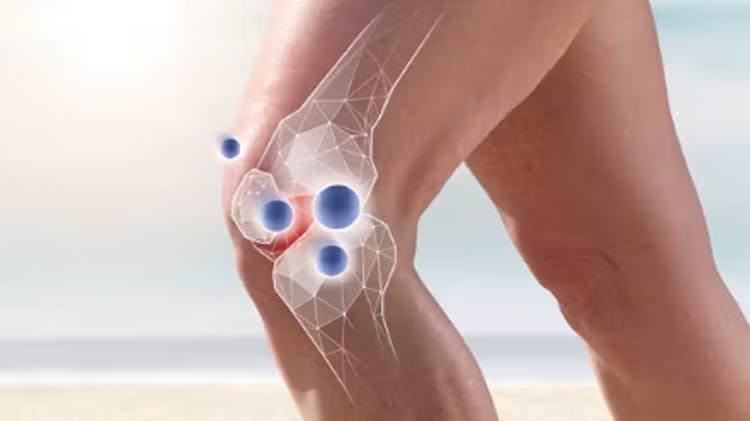
Arthritis Pain 101
Discover our educational content surrounding joint pain and osteoarthritis pain and its prevalence worldwide.

Join Haleon HealthPartner
Get access to professional and patient resources, scientific research, and free patient samples.

